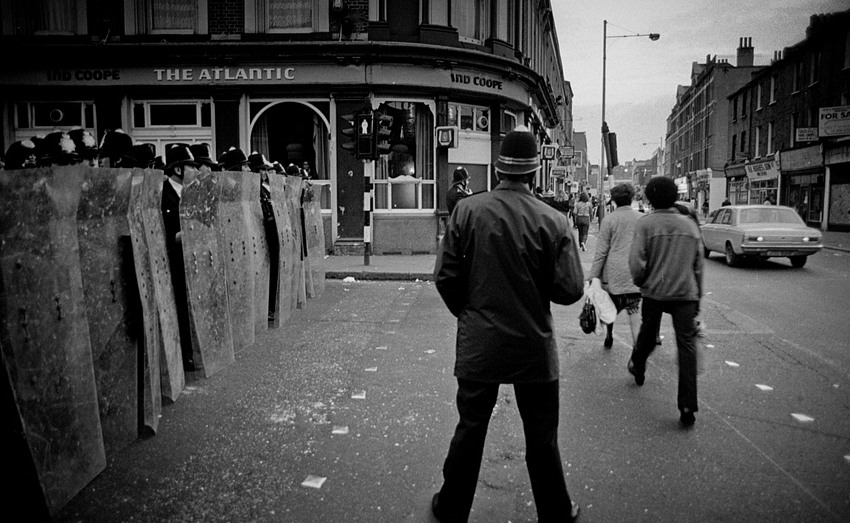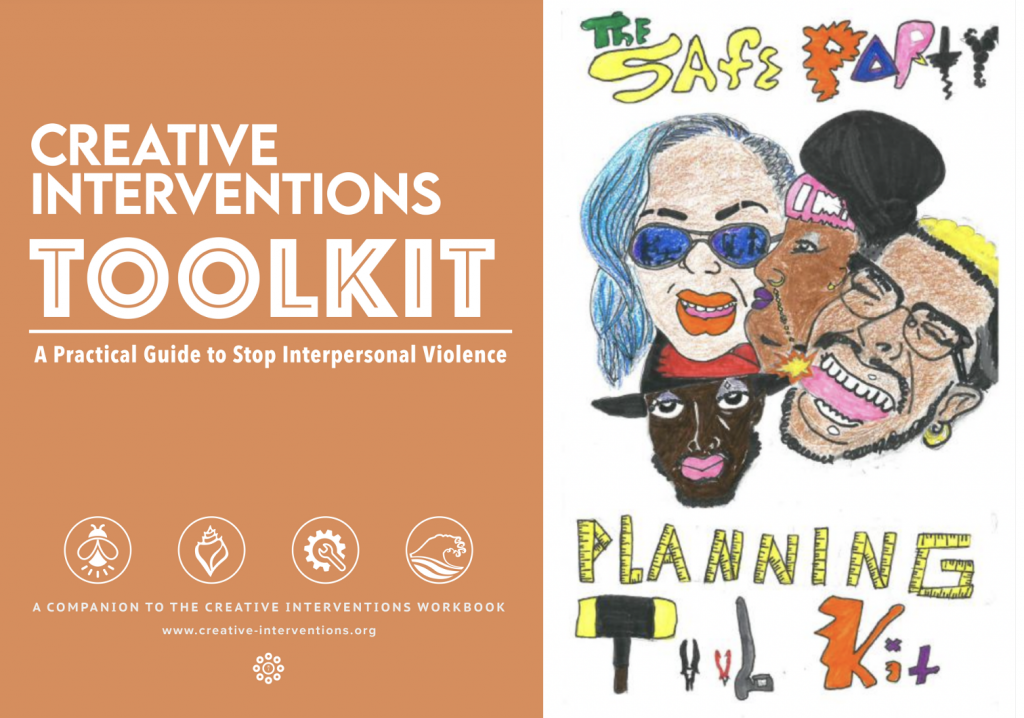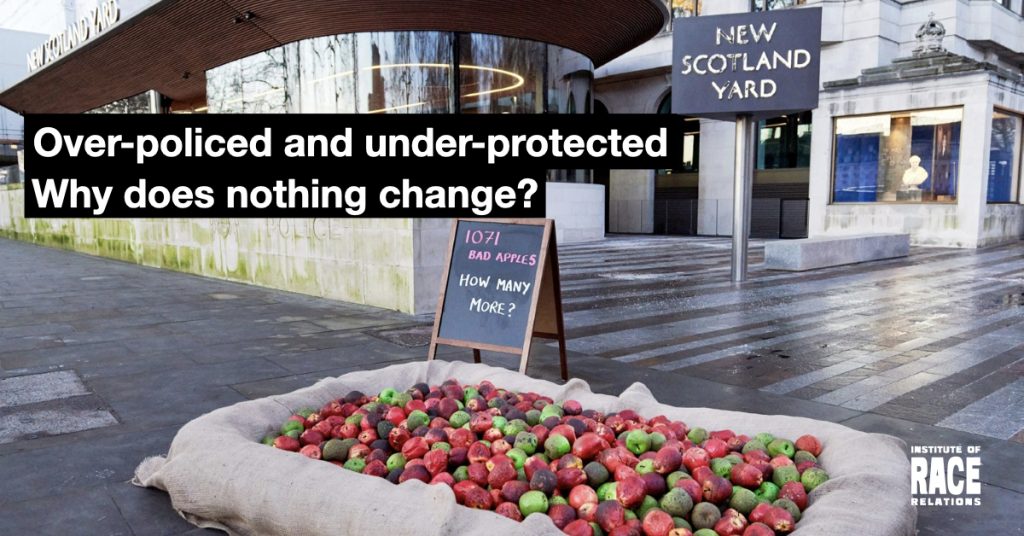Twenty-four years separates them, but both the Macpherson report and the Casey report identified ‘poor service provision’ as at the heart of institutional racism in policing. Writing from an abolitionist perspective, criminologists Sarah Lamble and Megan McElhone argue that getting to grips with contemporary police racism demands a more expansive approach.
The recent finding in the Casey review that the Metropolitan Police are institutionally racist, sexist and homophobic will come as little surprise to many. The Met police have been mired by countless scandals and public trust in the police has fallen to an all-time low.
Yet many will be perplexed as to why these problems persist. Baroness Casey’s findings come 24 years after Sir William Macpherson’s public inquiry into the racist murder of Stephen Lawrence, which first officially acknowledged that institutional racism was a problem plaguing British policing. The Macpherson report marked a watershed moment in British ‘race relations’ and its 70 recommendations instilled many people with hope that racially discriminatory policing practices would be reformed.
However, change remains elusive. Black people in England & Wales are over nine and a half times more likely to be stopped and searched than white people; a disproportionality that is comparatively worse than the figures from 20 years ago. During the first national Covid-19 lockdown these disparities deepened – the equivalent of 1 in 4 Black males between the ages of 15 and 24 were stopped and searched in a three-month period, despite the fact they were not committing a crime. At the same time, policing technologies, including the Gangs Violence Matrix and Live Facial Recognition, continue to mark Black people and members of other racialised communities for police attention. Photographs and videos routinely surface on social media depicting racially charged, violent, and abusive behaviour by police, including harassment of Black children. These patterns leave many members of racialised communities feeling perpetually over-policed and under-protected, much like they were two decades ago. As Stephen Lawrence’s mother, Baroness Doreen Lawrence, describes ‘things have become stagnant, and nothing seems to have moved’.
How should we make sense of the persistent lack of progress in addressing police racism over the last two decades? Were Macpherson’s recommendations not implemented, and if not, why? Is the problem a lack of resources? A lack of political will? Or is there something fundamental to the nature of policing that makes police organisations and their practices resistant to change?
The problem is twofold: first, the problem of police racism, sexism and homophobia has been widely interpreted to be an issue of bad apples on the one hand and ‘poor service provision’ on the other, rather than a problem with the very function of police. Second, as a consequence, police reforms focus on the wrong targets. We suggest a different approach, which aims to address the harms of policing itself.
More than ‘bad apples’
Police racism is commonly understood as a problem of ‘bad apples’. Such thinking assumes that police organisations – like any other public body – will inevitably contain their share of racist individual members; that police racism arises from the attitudes and behaviours of these wayward individuals; and as such, that police racism represents a deviation from the ‘normal’ functioning of police. In turn, it follows that redressing police racism is a matter of removing the bad apples from the barrel.
According to the Casey review, ‘bad apple’ explanations of police racism are prevalent in the Met Police. As pointed out in the review’s Final Report, while the Met’s current corporate Strategy for Inclusion, Diversity and Engagement (‘STRIDE’) concedes that there is evidence of racism, sexism, homophobia and ableism within the organisation, it takes the stance that such discrimination can be traced to
the behaviours and standards of a very small minority of colleagues who have not demonstrated the values of compassion, integrity, courage and professionalism to the level that befits a member of the Met (p. 236).
The Casey review heard from police officers who not only repeated this ‘party line’, but argued that attempts to regulate police behaviour to curb discrimination were undesirable because discriminatory language was ‘banter’ and necessary for ‘protecting [officers’] mental health in a stressful job’ (p. 272).
In treating police racism as a problem confined to a minority of officers, ‘bad apple’ explanations fail to acknowledge that police racism (like sexism, homophobia and ableism) is shared within police organisational cultures, providing officers with occupational knowledges (or ‘vocabularies’) which they can draw on day-to-day. Because police practices are carried out with reference to these occupational knowledges and in turn reaffirm them, they sustain police racism and other forms of discrimination. As summed up in the Casey review’s Final Report, ‘racism and racial bias are reinforced within Met systems’ (p. 17). As such, police racism cannot be simply chalked up to badly behaved individual officers; racism and other forms of discrimination are embedded within police organisations and police work.
It is precisely because of these shortcomings that the Casey review – and the Macpherson report before it – encouraged a shift away from individualistic explanations and towards analysis of institutional racism.
Bad apples to bad barrels: institutional racism
While ‘bad apple’ explanations of police racism persist, acknowledgment of institutional racism has also featured in public discussions of policing since the 1980s. This is largely owing to two public inquiries into policing: the Scarman report into the Brixton uprising of 1981, and the Macpherson report. During the Scarman Inquiry, community organisations asserted that British society was institutionally racist, but Scarman rejected this claim. Nearly two decades later, Macpherson revisited the question and reached a different conclusion. Defining institutional racism as ‘[t]he collective failure of an organisation to provide an appropriate and professional service to people because of their colour, culture, or ethnic origin’, the former High Court judge held that ‘institutional racism … exists both in the Metropolitan Police Service and in other institutions countrywide’.

Although Macpherson’s findings marked an important shift in official understandings of the problem of racism, commentators warned from the outset that Macpherson’s definition of institutional racism was ambiguous and unlikely to be translated into meaningful reform initiatives. To some extent, their concerns were substantiated; while the Macpherson report prompted police organisations across England to implement a flurry of reform initiatives, many were narrowly directed toward individual officers’ racist attitudes and their use of racist language. In terms of stop and search, which Macpherson regarded as an important police power vital for crime prevention, officers merely had to account on paper for their actions.
As the Casey review documents, the concept of institutional racism is still poorly understood by police officers, who insist that the patterned Met police practice of strip-searching Black children is not evidence of institutional racism because racial discrimination and misconduct was not ‘deliberate’ or ‘malicious’ (p. 327). However, what they fail to grasp is that officers’ intent is not a key consideration in determining whether an organisation is institutionally racist because institutional racism is concerned with outcomes and effects. The Casey review nevertheless heard that senior Met officers are aware of public concern about the ‘label’ of institutional racism, which, in their view, is an enduring ‘albatross around [the organisation’s] neck’ (p. 331).
We argue that police institutional racism persists after the Stephen Lawrence Inquiry not because Macpherson’s definition was vague or difficult to operationalise, but because it equates police racism with poor ‘service provision’ – a problem that is replicated in the Casey review. Adopting Macpherson’s definition, Casey holds that Macpherson’s finding of police institutional racism ‘set a new benchmark to measure the force’s relationship with its Black, Asian, and ethnic minority populations’ (p. 287). In turn, the Casey review is concerned with the question of how the Met can ‘can ensure lasting improvements to the service it provides from London’ (p. 26), for example by diversifying recruitment, tightening officer vetting processes, and improving misconduct processes. But as we explain below, police racism is not indicative of the police’s ‘collective failure’ to provide an ‘appropriate and professional service’ to racialised communities – rather, racism is fundamental to the project of policing itself.
Police work in historical context
Many people assume that the primary function of police work is fighting crime; yet this is not empirically or historically accurate. Police scholars have long shown that police officers actually spend very little time fighting crime or enforcing the law; most of their time is spent creating and upholding social order. This not only means repressing behaviour perceived to be ‘disorderly’ but also upholding wider economic relations of property accumulation and labour exploitation, which are built on, and require, racial inequality. Racism is not an unintended side effect of policing; rather, racism is built into the very function of policing work itself and has been since the inception of modern police.
Police organisations in Britain and its former colonies were established from the nineteenth century onwards with a clear purpose of maintaining social order – including class, racial and gender order. Since then, police have facilitated the expropriation of land and labour necessary to support colonial and capitalist expansion. Their work has entailed surveilling, controlling and repressing the resistance of colonised peoples across the Empire, as well as the working classes in the metropole. These police functions continue: throughout the last five decades, while an allegedly post-colonial Britain has sought to re-shape itself as a nation-state, (former) colonial subjects migrating to Britain have been met with policing which, in James Trafford’s words, has ‘reproduc[ed] colonial power in a context where the colonies are no longer at a distance but dispersed and intimate’. Such policing has reflected and reestablished racial tropes, including that formerly colonised peoples are ‘uncivilised’ and disorderly and are thereby at odds with the British nation and its citizenry – even if within them. While police practices on colonial frontiers and those on the streets of London today may not be identical, police work continues to (re)create social stratification, racial categorisations and racial ordering.
Since police organisations have upheld social inequality from their inception, we should not be surprised that police reforms do not eliminate police racism. To reform something is to try ‘fix’ it and make it better at carrying out its intended function or purpose. As such, police reforms – including commonly-proposed initiatives like enhanced training and diversifying police recruitment – will not make policing less racist or fairer for racialised communities, as often claimed. Rather, these reforms obscure the structural and systemic nature of police racism, classism and violence, leaving intact the legitimising myth that the police keep ‘us’ safe. Reform initiatives also become a rationale for more funding and staff, thereby allowing police organisations to expand under the pretence of providing an improved ‘service’ while maintaining the status quo of their core functions. In short, the crux of the problem is that we are trying to fix an institution based on a false presumption about its nature and purpose.
Addressing police racism: focus on reducing harm
If racism and discrimination are intrinsic to police organisations and their work, then reducing police racism either requires a fundamental change to the function of the police, or a harm reduction approach that limits the impacts of that function. Of these options, a harm reduction strategy is most practical in the short-to-medium term. Such an approach means scaling back police power and limiting the contact that police have with our communities in order to reduce people’s exposure to the harm and violence of policing. Put simply, the best way to reduce police racism is to reduce our reliance on policing.
To do this, we must radically reduce the size, scope and remit of police powers, beginning with the powers that most often target racialised communities. This requires ‘non-reformist reforms’ – strategies that set out to make incremental institutional changes, but with the specific goal of reducing the power and scope of an institution rather than reinforcing, expanding, or enlarging it. As described by Berger, Kaba and Stein, non-reformist reforms are ‘measures that reduce the power of an oppressive system while illuminating the system’s inability to solve the crises it creates’. So, where traditional reform initiatives would accept the fundamental status quo of policing and merely tinker at the edges to respond to racism, non-reformist reforms would set out to pare back police power in recognition that racist violence is foundational to policing.
Such strategies include: (1) banning police use of lethal tools and tactics like tasers, pepper spray, and firearms; (2) scrapping police programmes that target specific communities like Prevent, the Gangs Violence Matrix, so-called Knife Crime Prevention Orders and legislation targeting Gypsy and Traveller communities; (3) repealing laws that criminalise drugs, sex work, homelessness and poverty; (4) ending the strip searching of children. Another vital tactic is to scale back police budgets and redirect funds to community health, education and affordable housing.
At the same time, we must build up community-based alternatives to ensure people have a wider range of options to turn to when faced with an emergency or crisis situation. Turning away from police in emergency and crisis situations may seem counter-intuitive, but police are already failing to respond adequately to emergencies. While many assume this is due to a staff shortages, research over several decades shows that more police does not result in less violent crime – a finding which even police institutions acknowledge. When the police do respond, they often arrive after the incident has occurred and can make situations worse.
Building alternatives to police means enhancing community capacities for dealing with emergency and crisis situations. This includes skilling up communities in safe bystander interventions, conflict de-escalation tactics, non-punitive mental health crisis support, safer party toolkits, domestic violence prevention/safety planning, and transformative justice initiatives. It also means mapping out alternative sources of support, so that calling the police becomes a genuine last resort.

Where professional support is needed, we must ask whether the police – whose main power is the authority to use physical force and violence – are the right professionals to be called. Too often police respond to situations that they are ill-equipped to address. One BBC report found that Police in Devon and Cornwall were spending 40 per cent of their time on mental health calls. Similarly, the Metropolitan Police reported dealing with a mental health call once every four minutes, and sending an officer to deal with a mental health issue once every 12 minutes. When police respond to people experiencing a mental health crisis, it can escalate rather than reduce distress, which often results in physical restraint that can lead to death, particularly for black men. Many people – including police – recognise that mental health crisis teams, first aiders, addiction support workers, and/or domestic violence crisis intervention advocates are far better positioned to support in crisis situations.
Finally, we need to address the underlying causes of violence, harm and crisis, which prompt people to turn to the police in the first place. A key reason why police are dealing with mental health calls, for example, is because mental health crisis services are vastly under-resourced. Reports indicate that mental health calls to police peak when health services are closed. Redirecting resources away from policing and toward harm prevention strategies – such as non-punitive health care; safe and affordable housing; addiction support; education; income security; and poverty reduction – is far more likely to reduce communities’ contact with police in the long run, and ultimately better keep people safe.
Looking beyond the police
Just as the post-Macpherson report reforms have failed to address police racism in Britain, unfortunately, the Casey review will likely suffer the same result. This is because both reports, while acknowledging police institutional racism in Britain, misunderstand the function of police. Where post-Macpherson approaches view police racism as a problem with how police operate (i.e., failing to treat people equally), British police history tells us that racism is intrinsic to the function of policing itself. Because policing is by design intended to uphold existing social order and reinforce structural inequalities, tinkering with its operations will not fundamentally reduce discrimination. The strategic question we face is not about how policing can be altered so that everybody receives the same level of ‘service provision’ – the approach taken by Macpherson, and now Casey. Rather, the question is how we can reduce our reliance on police and build genuine alternatives.

